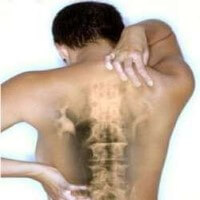Diabetes

Diabetes mellitus, commonly referred to as diabetes, is a set of metabolic disorders that lead to a high level of blood glucose for an extended interval of time. It occurs due to either inadequate production of insulin or the inability of the cells to absorb the insulin. It comes under the category of chronic disease as it takes a lot of time and patience for the management of diabetes.
The management of blood sugar, insulin injections for Type-1 patients and blood sugar lowering agents for Type-2 patients are the main ways to manage diabetes in patients. A healthy, well-planned diet and lifestyle with controlled blood sugar levels is the prime target in managing patients with diabetes. Diabetes can cause many complications like ketoacidosis, heart disease, stroke, chronic kidney failure, and foot ulcers.
- Type 1 DM also known as IDDM (Insulin-dependent diabetes mellitus) results from the inability of the pancreas to produce enough insulin.
- Type 2 DM previously known as NIDDM (Non-Insulin Dependent DM) manifests itself as insulin resistance. Mainly caused by excessive weight and lack of exercise.
- Gestational Diabetes: The third form of Diabetes is called ‘gestational diabetes’ and is found in pregnancy where pregnant women without a previous history of diabetes develop high levels of blood sugar.
Ayurvedic Description Of Diabetes:
In Ayurveda, Diabetes is classified under ‘Prameh Roga’. Prameh originates when Kapha dosha is dominantly aggravated (in association with other doshas) and they affect Meda (fat), Mansa (flesh), Udaka (lymphatic channel/endocrinal secretions), etc.
Due to abnormal digestion, the afflicted dhatus (tissues and their derivatives) are driven towards the urinary system and the disease Prameh (diabetes) results. Based on the involvement of doshas, their degree of affliction, and the gradation of the illness, various signs and symptoms have resulted.
According to the features, different names are given. The excretion of a large amount of vitiated urine (turbid or unctuous) with deranged color is the main feature of this illness.
Signs & Symptoms
- Excessive urination
- Excessive thirst and increased hunger
- Weight loss
- Fatigue
- Slow healing of wounds
Causes and Risk Factors
1. Family history
The risk of getting diabetes increases if a parent or sibling in the family has a history of diabetes.
2. Obesity
Obesity is one of the main causes of type-2 diabetes, in many cases, diabetes and obesity exist as co-morbidities.
3. Sedentary lifestyle
The chances of diabetes are more in people who follow a sedentary lifestyle, people who exercise less than 150 minutes a week are more at risk of getting diabetes.
4. Insulin resistance
Type-2 diabetes often starts with cells that are resistant to insulin. It means the pancreas has to work extra now to make enough insulin to meet the body’s needs.
5. Impaired glucose tolerance
It is a pre-diabetic condition of diabetes. It precedes diabetes for many years.
6. Gestational diabetes
If a woman has gestational diabetes at the time of pregnancy, the chances of getting type-2 diabetes become more later in life.
Self Care Tips
- One must engage in physical exercise at least three times a week to reduce the chances of getting diabetes and help in maintaining blood sugar levels.
- Having a balanced diet with a variety of foods that includes fruits, vegetables, and low-fat dairy products greatly reduces the risk of diabetes and also helps in its management.
- The diet for diabetes should be rich in fibrous content and whole grains as these help in the management of diabetes.
- Use sugar in moderation and consider lower sugar options if available.
- It is very important to check your feet daily, keep them clean and soft, wear well-fitting, breathable shoes and socks, and report any changes you observe to your healthcare provider.
- Keep on checking the blood sugar and blood pressure as it helps in the monitoring of diabetes.
- Strictly avoid drinks that contain a high level of sugar as it may worsen the condition of a diabetic patient.
- Maintain a healthy body weight as obese people find it very difficult to manage their diabetic condition.
- Adopting a healthy lifestyle and diet is key to the successful management of diabetes.
The Ayurvedic treatment of diabetes is based upon the nature of the individuals as it differs both in obese (sthool) and lean (krush) patients. In obese patients, purification (samshodan) is carried first and later santarpan (tissue rejuvenation) is followed. The disease is controlled by wholesome diet and habits. In case of lean patients, brimhan (tissue nourishment/rejuvenation) is carried by selective medicines and diet. Other than this, all the Prameh are treated based upon the specific dominance of doshas.






